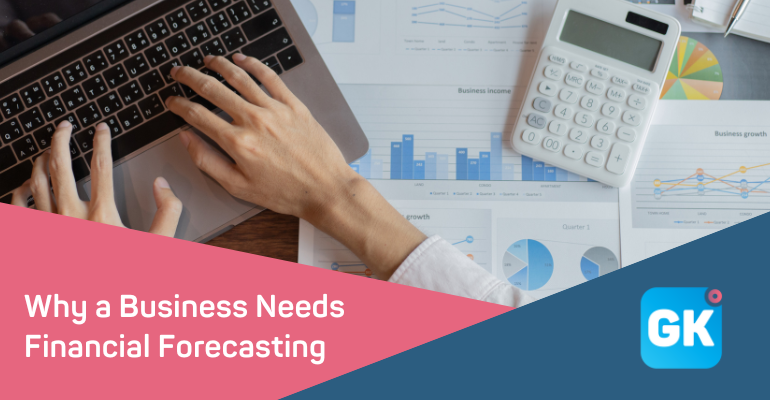Why a Business Needs Financial Forecasting

Why a Business Needs Financial Forecasting
Forecasting is extremely important for any business, but unfortunately, many businesses do not put a forecast in place. Business owners are often too busy solving problems and searching for the next sale and ignore the forecasting process.
However in order to identify new opportunities and gain competitive advantage small and medium sized businesses need to incorporate forecasting into the management process. Once they have put together projections, they can use them as a guide for strategy and decision making.
What is Financial Forecasting?
Forecasting is a planning process that helps management better confront uncertainties about the future. It can be created for a period up to 5 years. Anything over a 36-month projection can be difficult to maintain accuracy. Forecasting relies on past and present data to identify trends and estimate future outcomes. Forecasting projects, the company’s financial future and can be used to determine expected future revenue and expenses. Financial Forecasts can be used for many strategic decisions including:
- Assessing acquisition opportunities
- Assessing future debt requirements.
- Assessing future employment requirements
- Calculating cost cutting requirements
- Considering movements in economic conditions including:
Inflation; Increased interest rates; Increased wage costs
What are the Benefits of Creating a Financial Forecast?
With forecasting you can create a long-term strategy for the company. This is the overall vision for the business. A long-term strategy can be anywhere between five and 10 years in the future and are very broad. They try to get an overall picture of what the company wants to be down the road. A long term forecast are used more to give guidance to a business owner as opposed to being used for specific decisions.
Establish a Pathway For Specific Targets:
Every business needs a plan to know where you are going. The forecasts are the map to help you establish the short and long-term goals and develop a pathway on how to reach those goals. You need to understand the historical data about your company and the overall market trends. Once the forecasts are developed, you will be able to set very specific targets.
Current and Potential Investors Will Need a Forecast
Investors want to understand a business’ current financial health but also want to understand where a business is headed. Investors need to know:
- Where the business will be 12/24/36 months
- Will want to assess the risk of any business
- Know when the company may need a future cash injection
Helps Identify Risk and Opportunities
You want to limit your risk and increase new opportunities. Forecasting can help you identify risk and identify new opportunities. You will be able to better understand your current customers and will learn ways to entice new ones with proper forecasting. You can develop sales plans to go out and market to those new customers, but you must make sure your forecasting is accurate and based on proper assumptions.
Plan and Predict Cash Flow
For most small businesses, cash flow is a challenge. You have more than enough cash flow one month and not enough cash flow the next. Forecasting allows you to predict and anticipate your cash flow. You might look at several years of data and see a pattern of when the business seems to have a cash flow problem. You can examine, so you understand why the issue is occurring, and find ways to limit the impact when it occurs in the future.
Ability to Inform Employees
Any good business must openly communicate with employees. Forecasting is a tool that helps management effectively communicate valuable information about the company. Employees need to understand the plan for being successful and in what way the company plans to achieve the objectives. It can help motivate employees to stay and improve the business.
Get in Touch:
If you are interested in finding out how we can help your business, please book a no obligation call today.


